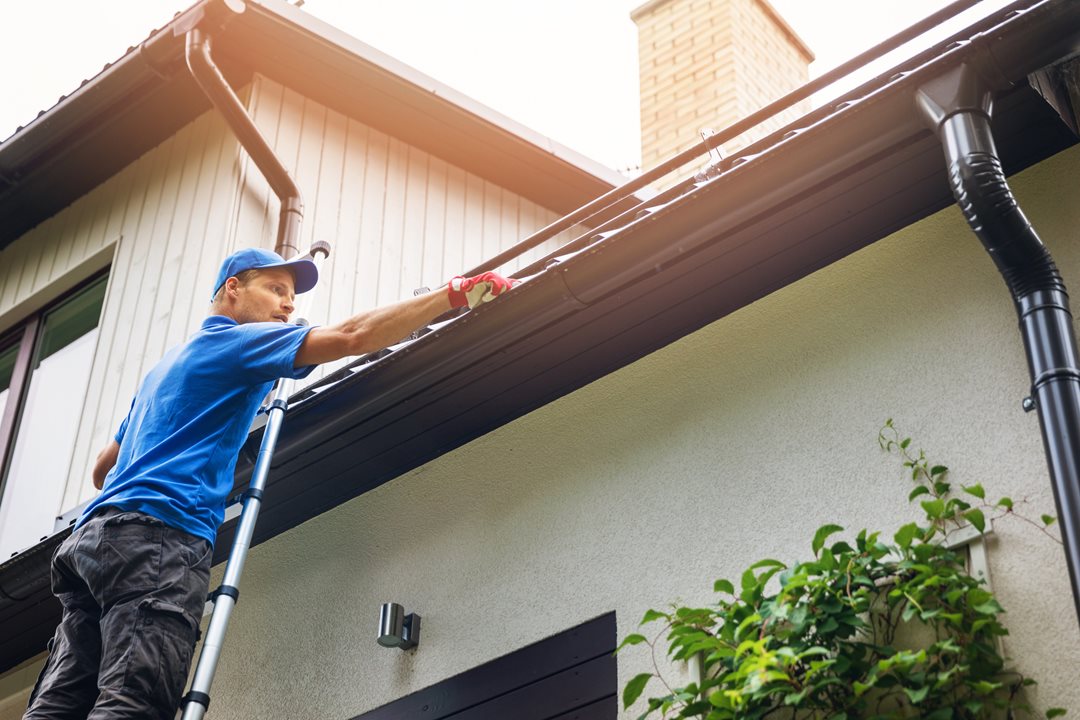Perspective
Fall home maintenance for first-time homebuyers
September 1, 2022
by PEMCO Insurance
 Take advantage of September’s warm days to knock off critical weather preparations to keep your home safe during the cold, wet months ahead. If you’re new to homeownership and not sure where to start, tackle these to-dos first: clean gutters, disconnect garden hoses, insulate exposed pipes, schedule a chimney cleaning and furnace tune-up, and shut down automated sprinkler systems.
Take advantage of September’s warm days to knock off critical weather preparations to keep your home safe during the cold, wet months ahead. If you’re new to homeownership and not sure where to start, tackle these to-dos first: clean gutters, disconnect garden hoses, insulate exposed pipes, schedule a chimney cleaning and furnace tune-up, and shut down automated sprinkler systems.
Here’s how to get started:
Gutters. Clogged, overflowing gutters can be worse than no gutters at all. They can cause wet crawlspaces, buckled siding, damaged door sills and underlayment (from water wicking in around doorways even with no visible dampness on the floor), and rot and leaks at your roof's edge – all of which can lead to mold and repair bills that typically aren’t covered by insurance. In the colder parts of our region, clogged gutters can cause ice dams, where trapped snowmelt pools and eventually seeps into wall cavities. You can hire a pro to clean your gutters or DIY with these tips [video].
Garden hoses. Water trapped in faucet pipes can freeze, potentially rupturing the pipe and causing a leak when the ice thaws. Disconnect your garden hose and protect the faucet with a foam cover. If it has an indoor valve, turn it off and open the faucet to drain any trapped water.
Exposed pipes. During extreme cold snaps or prolonged stretches of sub-freezing weather, uninsulated pipes in your attic, crawlspace, workshop or garage can freeze solid and rupture. Once they thaw, they can spew water, causing serious water damage in minutes, especially if you’re not home to immediately shut off the water. Wrap them with insulation and plug cold-air leaks around pipe installations with caulk or insulation. Learn more about frozen pipes [video].
Chimneys and flashing. If you burn more than one-half a cord of wood per year, your chimney needs cleaning at least annually (more if you rely on wood as your primary heat source, burn with your woodstove’s damper partially closed or burn unseasoned wood). Besides removing dangerous creosote, which can build up and lead to chimney fires [video] a chimney professional can spot and fix common problems like damaged flashing or rusted chimney caps before costly damage sets in. Even if you use your fireplace infrequently, an annual professional inspection can catch maintenance issues like moisture intrusion before they can cause expensive damage.
If you use a gas or propane fireplace, schedule a cleaning and maintenance at least every two years. Besides checking your pilot light and gas line, your technician will test for the presence of carbon monoxide and examine the vent for bird or rodent activity. Signs you may be overdue for service include soot buildup on the glass or logs, embers that no longer glow or grayish film on your fireplace glass.
Make sure you have a carbon monoxide detector on every level of your home. Here’s advice from the Environmental Protection Agency on where you should install them.
Furnaces. Whether you rely on a gas or electric furnace, annual professional preventive maintenance is the best way to ensure your heat system operates at peak efficiency while keeping your family safe and comfortable this winter. Besides possibly heading off a breakdown, furnace professionals also check for signs of damage or gas leaks. Stay up to date on filter changes. Some furnaces feature sensors that signal when it’s time for a change. If yours doesn’t, make sure you change them at least once a season.
Sprinkler systems. Drain in-ground automated sprinkler systems once you’re no longer watering to prevent pipes from freezing and bursting. Follow the draining procedures [video] recommended for your irrigation system. If you’re not sure what type of system you have, hire a sprinkler company to do it and watch so you can DIY next year. Take care if you decide to use compressed air to blow out the lines because too much pressure can damage your system.
Not into DIY? Here are more appointments you should book now if you’d like a pro to handle your winterization.
Share on social media